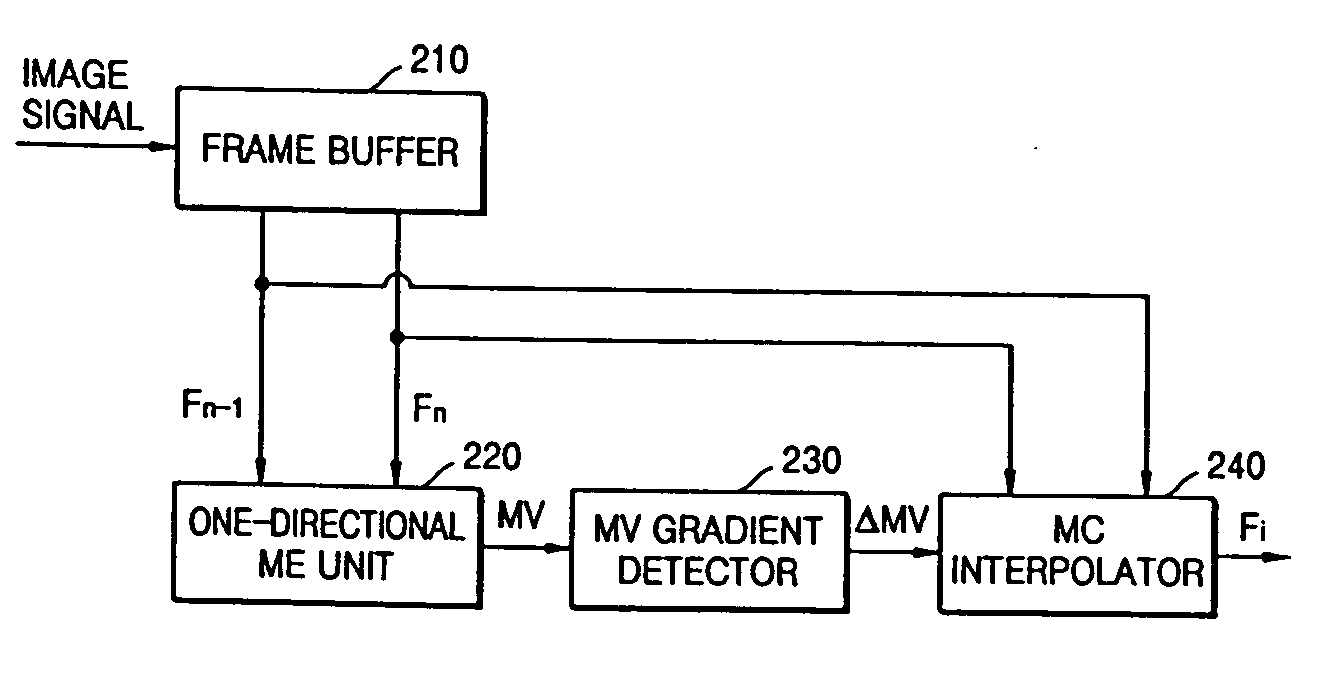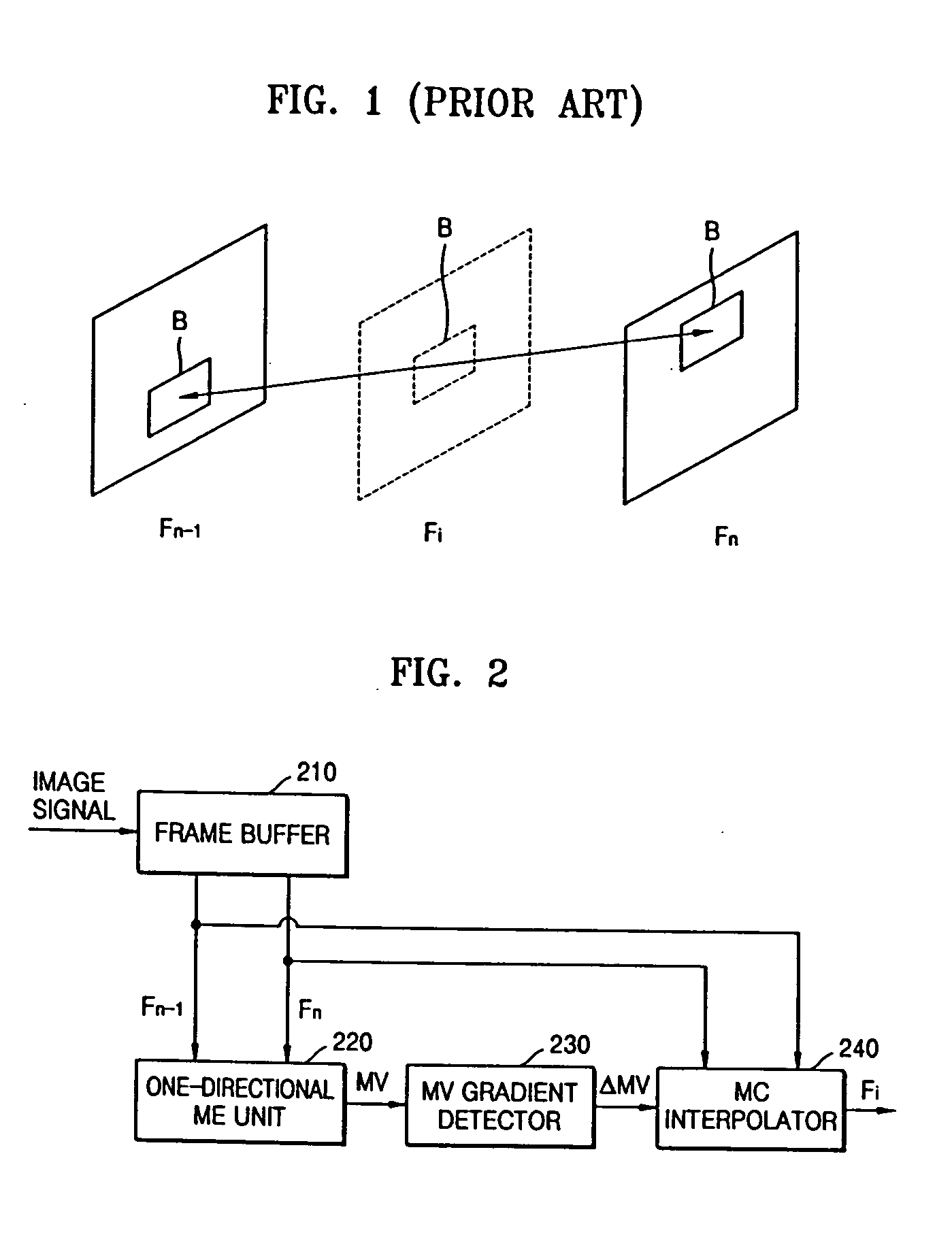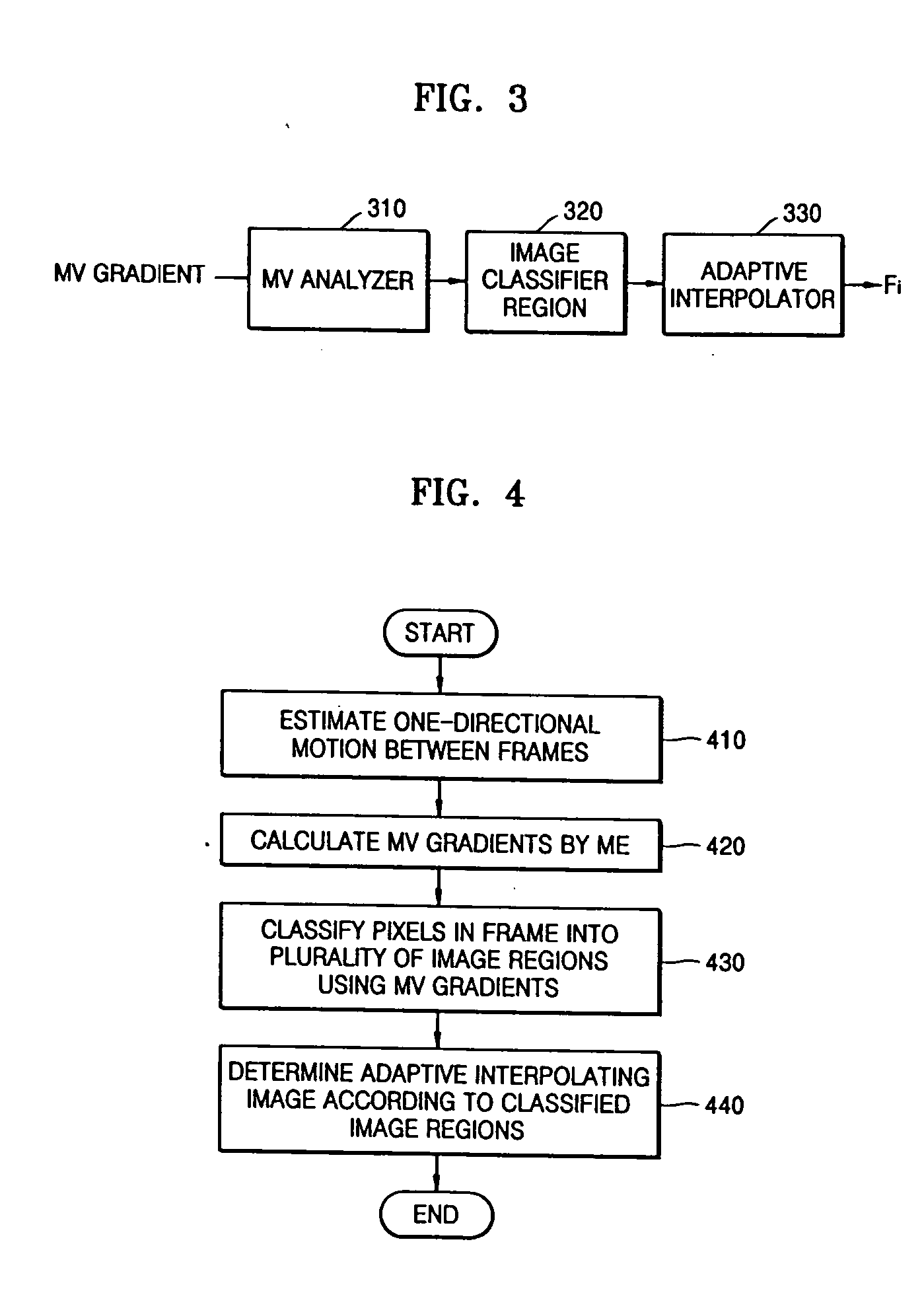Adaptive motion compensated interpolating method and apparatus
a motion compensation and interpolation method technology, applied in the field of frame rate conversion system, can solve the problems of large amount of redundancy, high possibility, distortion or blurring effect of image signal, etc., and achieve the effect of improving quality
- Summary
- Abstract
- Description
- Claims
- Application Information
AI Technical Summary
Benefits of technology
Problems solved by technology
Method used
Image
Examples
Embodiment Construction
[0023] Reference will now be made in detail to the embodiments of the present general inventive concept, examples of which are illustrated in the accompanying drawings, wherein like reference numerals refer to the like elements throughout. The embodiments are described below in order to explain the present general inventive concept by referring to the figures.
[0024]FIG. 2 is a block diagram illustrating an adaptive motion compensated interpolating apparatus according to an embodiment of the present general inventive concept.
[0025] Referring to FIG. 2, a frame buffer 210 can store an input image signal in a unit of a frame.
[0026] A one-directional ME unit 220 can perform backward or forward ME using an (n-1)th frame Fn-1 and an nth frame Fn stored in the frame buffer 210 to generate MVs.
[0027] An MV gradient detector 230 can detect gradients of the MVs generated from the ME unit 220.
[0028] An MC interpolator 240 can generate pixel values to be obtained by interpolating the frame...
PUM
 Login to View More
Login to View More Abstract
Description
Claims
Application Information
 Login to View More
Login to View More - R&D
- Intellectual Property
- Life Sciences
- Materials
- Tech Scout
- Unparalleled Data Quality
- Higher Quality Content
- 60% Fewer Hallucinations
Browse by: Latest US Patents, China's latest patents, Technical Efficacy Thesaurus, Application Domain, Technology Topic, Popular Technical Reports.
© 2025 PatSnap. All rights reserved.Legal|Privacy policy|Modern Slavery Act Transparency Statement|Sitemap|About US| Contact US: help@patsnap.com



